The holy grail of vegan roast dinners: Vegan Yorkshire Pudding! These vegan Yorkies are created with just a few simple ingredients, that you can easily get at any supermarket or already have in the pantry! They are crunchy on the outside, fluffy on the inside - and no eggs needed!
This recipe is:
- vegan
- dairy-free and egg-free
- easy to make
- a vegan version of the British classic
- perfect for a Sunday roast dinner, Thanksgiving or Christmas Day meal
- using only simple ingredients
- simply delicious
- crunchy on the outside, fluffy on the inside
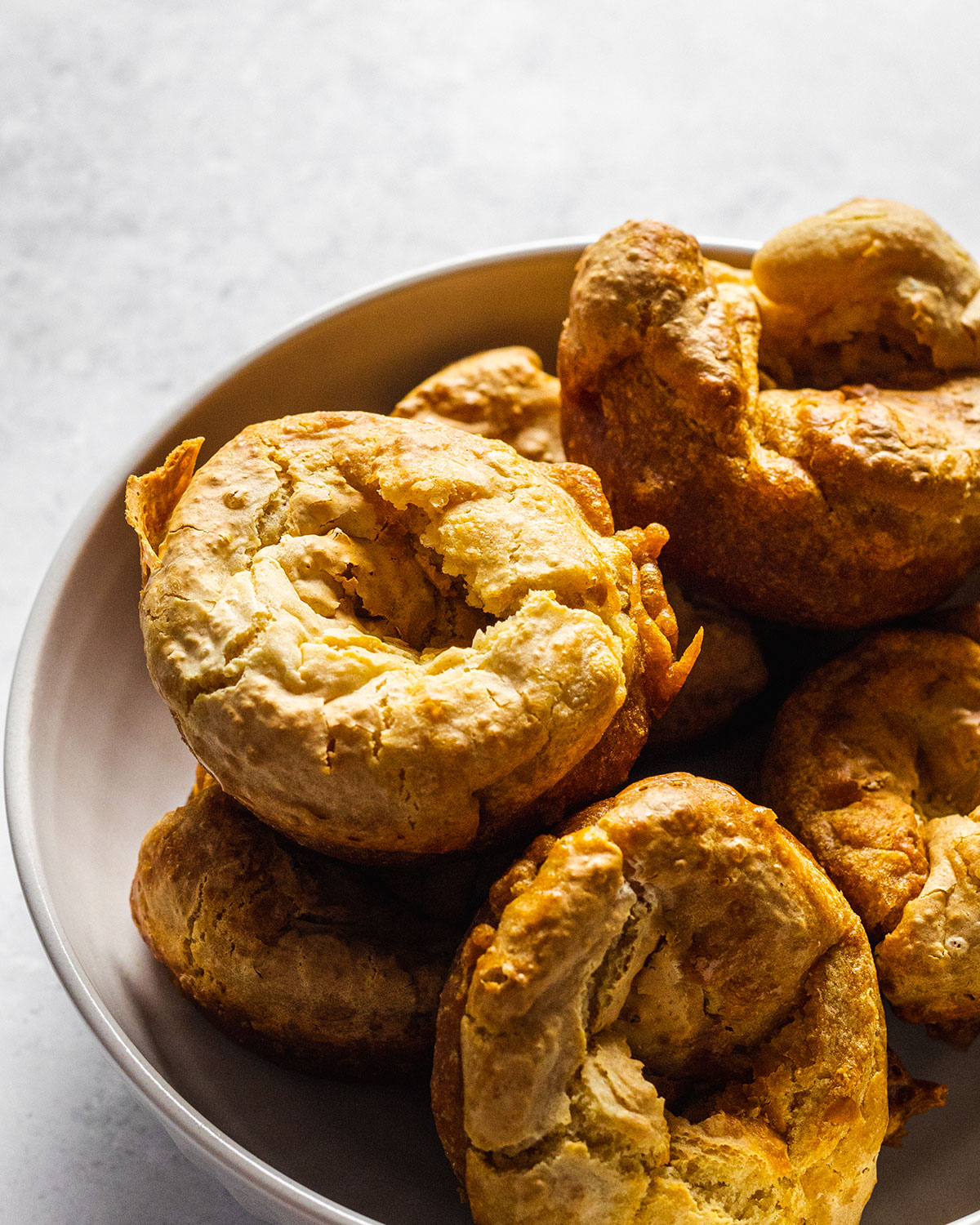
If you have followed me on Instagram for a while, then you might know that I've been working on a Yorkshire pudding recipe for quite some time in order to get the right crunch and fluffiness that I love. One thing I've learned in the process is that people have different expectations when it comes to Yorkshire pudding recipes - some like them ultra crunchy, some smooth, some chunky, some super soft and fluffy. I feel that I fall into the category of 50% crunchy, 50% fluffy + chunky, as that's how I love my vegan Yorkshire pudding the most!
If you love them just like that, this is definitely the recipe for you!
What is a Yorkshire Pudding?
A Yorkshire pudding is a baked pudding made from a smooth batter of eggs, flour and milk or water. It's considered a common British side dish and it is often served as part of a roast dinner or a traditional Sunday roast.
A Yorkshire pudding is a versatile food can often served in different ways depending on its size and ingredients. It is often served alongside a sauce, such as gravy, but it can also be filled or stuffed with things like bangers and mash.
The recipe base for Yorkshire puddings is also the base for the so-called 'Toad in the hole'.
Compared to other cuisines, Yorkshire pudding can be considered similar to Dutch baby pancakes or the American Popover.
History of the Yorkshire Pudding
Yorkshire pudding dates back at least to the 1700s. It was first described as a 'dripping pudding'. The cookery writer Hannah Glasse was the first to use the naming of 'Yorkshire Pudding' in print in 1747 in “The Art of Cookery Made Plain and Simple”.
The puddings have been generally associated with the North of England but the exact origins of the dish are unknown to this day.
Originally the pudding would have been cooked alongside the meat (traditionally beef) whilst it was roasting on a spit above open fire. The fats and juices from the meat would create drippings that would drip down into the pudding batter. This way, these drippings would be utilised instead of lost in the fire.
Traditionally, Yorkshire pudding is cooked in a large, shallow tin and then cut into squares before serving. Nowadays, puddings are created individually in their desired serving size and they can be bought as individual pre-made puddings in grocery stores across the UK.
What is the texture of a Yorkshire Pudding?
The perfect Yorkshire pudding texture needs to be light and airy, with a lightly crispy exterior. The cooking oil needs to be really hot in order to achieve the typical rise of a Yorkshire pudding.
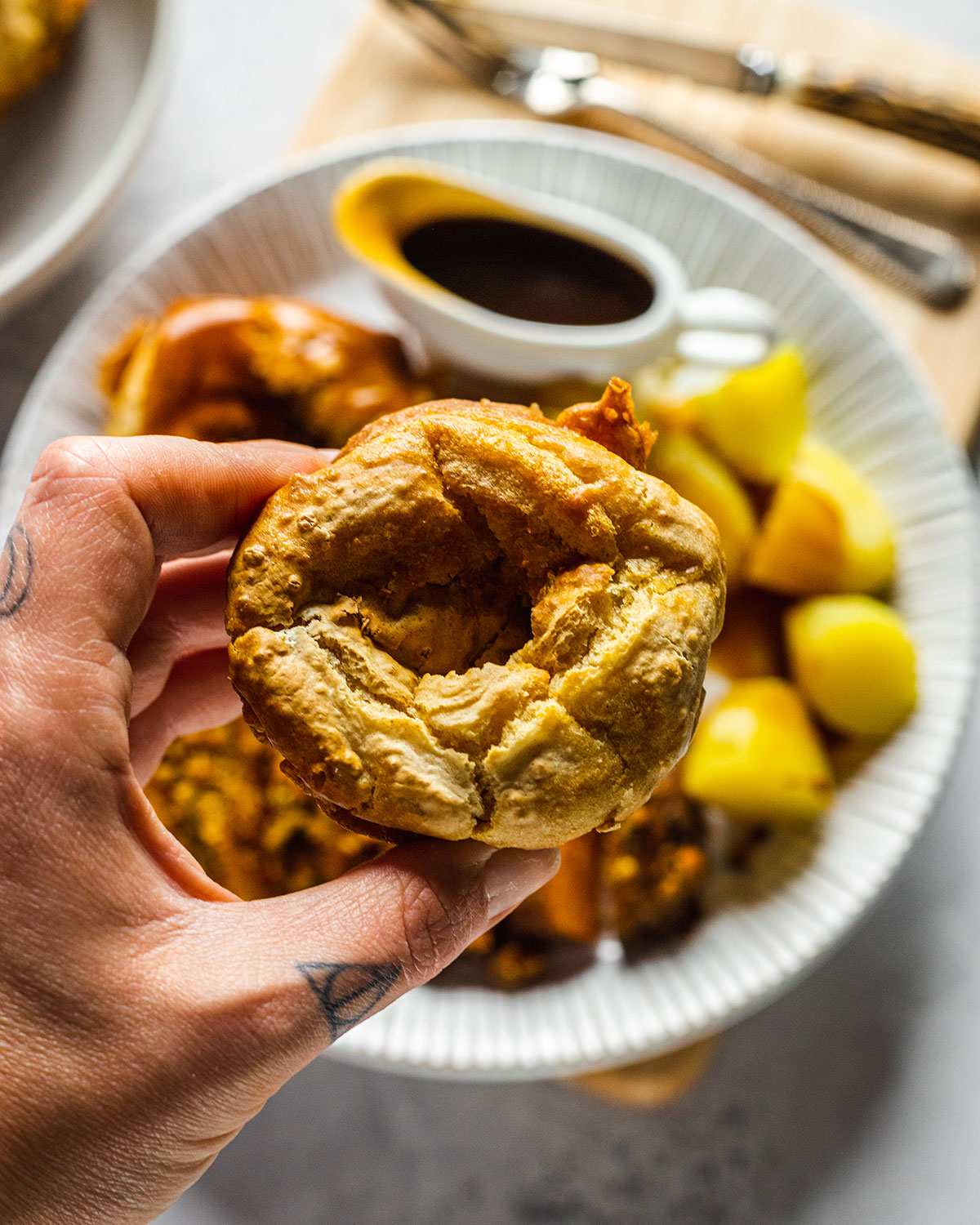
Ingredients & Notes
To make this Vegan Yorkshire pudding you only need a handful of simple ingredients:
Vegetable oil - In this recipe, the vegetable oil is heated in a muffin tray ahead of adding the Yorkshire pudding batter. This is done at a high temperature (450°F [232°C]). It is important that you use vegetable oil with a high smoke point so that the oil does not burn at this temperature. Using the wrong type of oil can not only ruin the taste of your Yorkshire pudding but also be toxic.
I generally recommend opting for a type of oil like rapeseed oil or an oil that's intended for use at high temperatures, but the smoke point might vary depending on the producer and brand.
Sadly, in the UK the smoke point of oil does not have to be mentioned on the label, and therefore most brands don't. The best thing to do would be to contact the brand directly if you want to make extra sure that their oil can be used at high temperatures.
Flour - I always use all purpose flour for my vegan Yorkshire pudding
Cornstarch - In the UK this is often also called: cornflour. Basically, that white fine powder stuff you use to thicken your sauces, that's what we need for this recipe.
Salt - fine black salt (kala namak). Kala Namak is a sulfurous salt that - when added to recipes - gives them that typical eggy taste. In this Yorkshire pudding recipe, it's an optional ingredient but even a small jar can last you a very long time and I definitely recommend investing in some. It adds the egg flavour into these Yorkshire puds.
Chickpea flour - Chickpea flour (often also called 'gram flour') is another ingredient that is not mandatory in this Yorkshire pudding recipe, but it adds a delicious egg flavour to these puds alongside the black salt. If you don't have any to hand though, feel free to leave it out.
Plant milk - I usually use unsweetened soya milk for my recipes at home, as I find it curdles best for this recipe. You can also use almond milk or oat milk.
Vinegar - For this recipe, we need to curdle the plant milk. This is done by adding an acid, such as apple cider vinegar or lemon juice to the milk, stirring briefly, and then setting it aside for 10 minutes. During this time the milk will curdle and become like buttermilk.
The acidity in this vegan buttermilk will react with the baking powder and baking soda once combined with the dry ingredients and create a wonderfully airy and fluffy texture for these vegan Yorkshire puds when baked.
If you don't have apple cider vinegar to hand, you can use white vinegar.
Find the full quantities in the recipe card below.
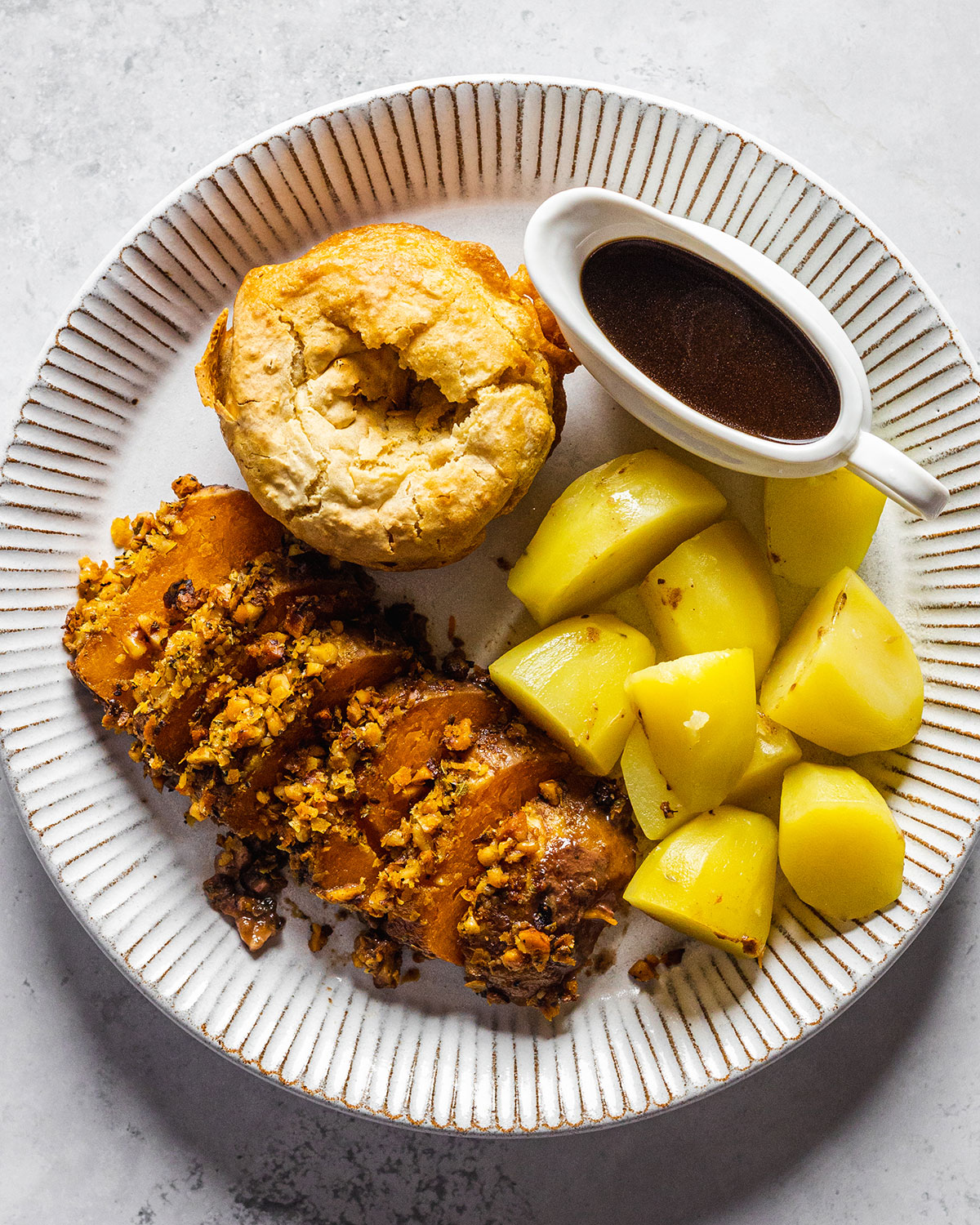
Equipment
- Oven - I have a standard fan oven in my kitchen and I use the fan-assisted setting when making these golden Yorkshire puds.
- Muffin pan - For this vegan Yorkshire pudding recipe, I always use a large 6-hole muffin tray (muffin tin). Make sure to use a metal muffin tin. These large ones are usually double the size of standard muffin trays. This recipe will work in a small muffin tray, but they won't fluff up as much to the Yorkshire pudding shape.
- Large bowl
- Measuring jug
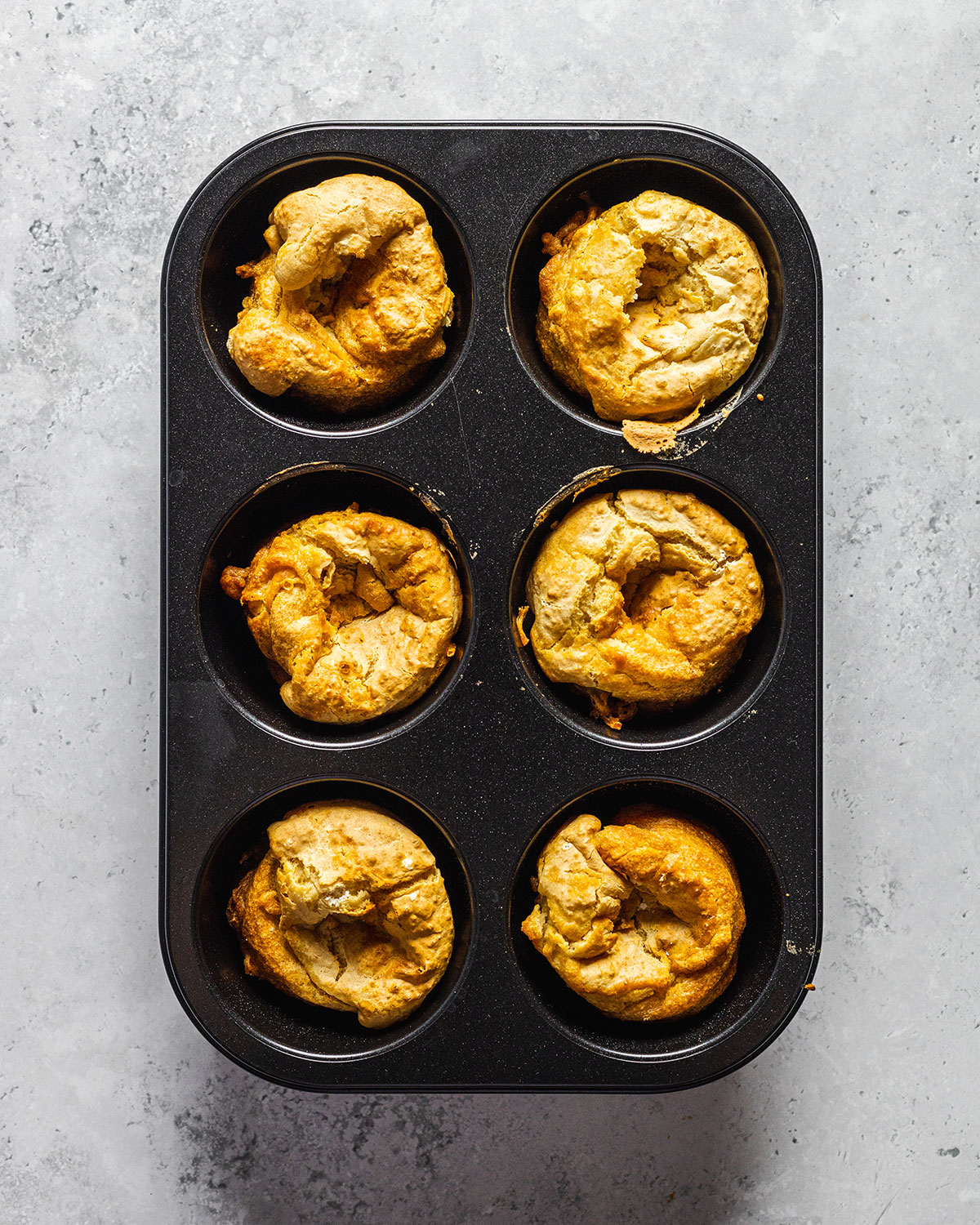
Instructions (Step-by-Step)
This vegan Yorkshire puddings recipe is pretty straightforward, however, I recommend reading all the steps in detail before starting the recipe.
Step 1: Prepare and preheat the muffin tray
Start by pouring 1 tablespoon of vegetable oil into each muffin hole of a large 6-hole muffin tin. Place it onto a baking tray in the oven at 450°F (232°C). Preheat the oil and the oven for roughly 20 minutes until steaming hot. The oven temperature is crucial for this recipe!
Important: Please see the ingredient notes regarding the type of oil to use for this recipe!
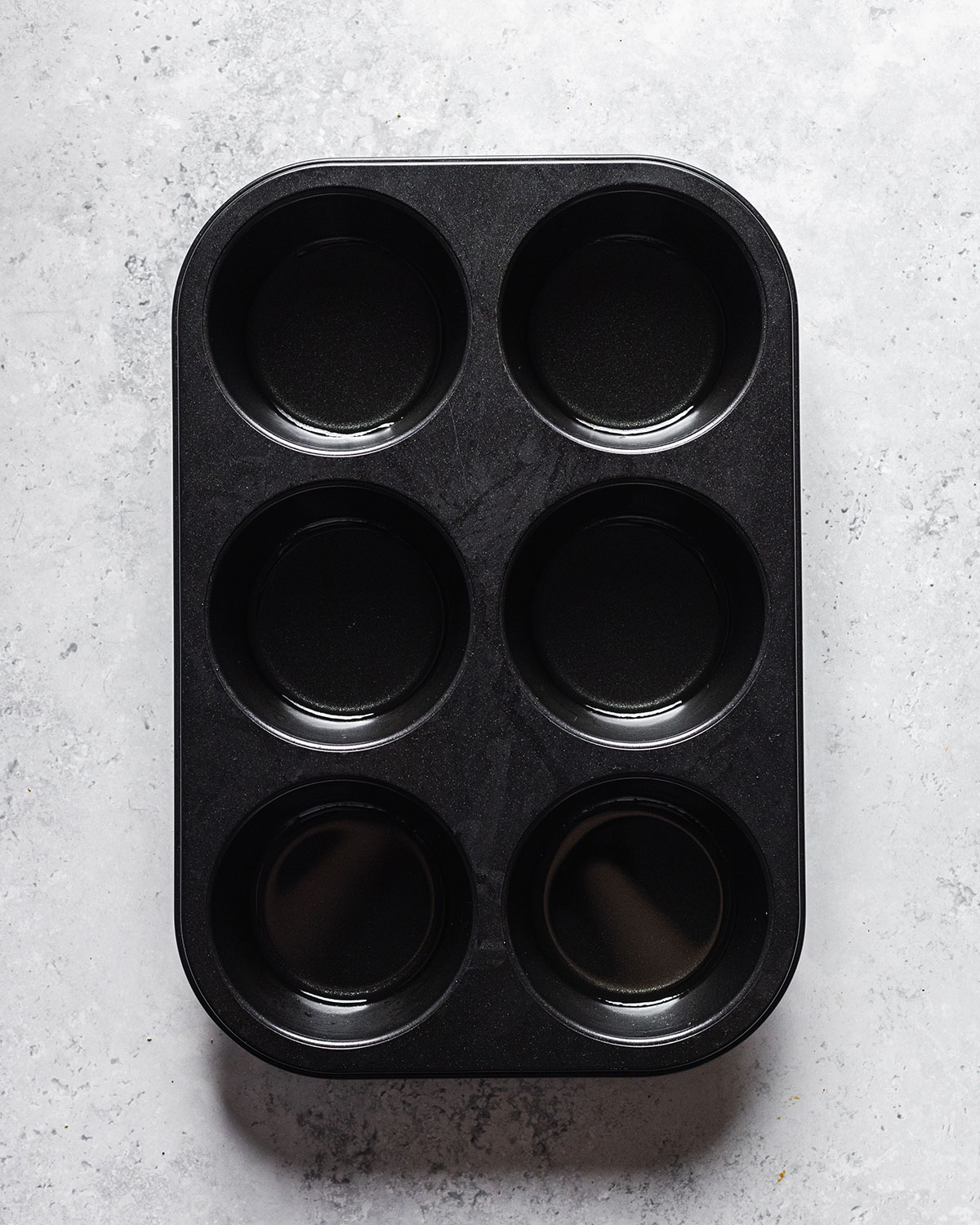
Step 2: Combine dry ingredients
In a mixing bowl, sift and whisk the plain flour, cornstarch, kala namak (also called: black salt), chickpea (gram) flour, baking powder, and baking soda.
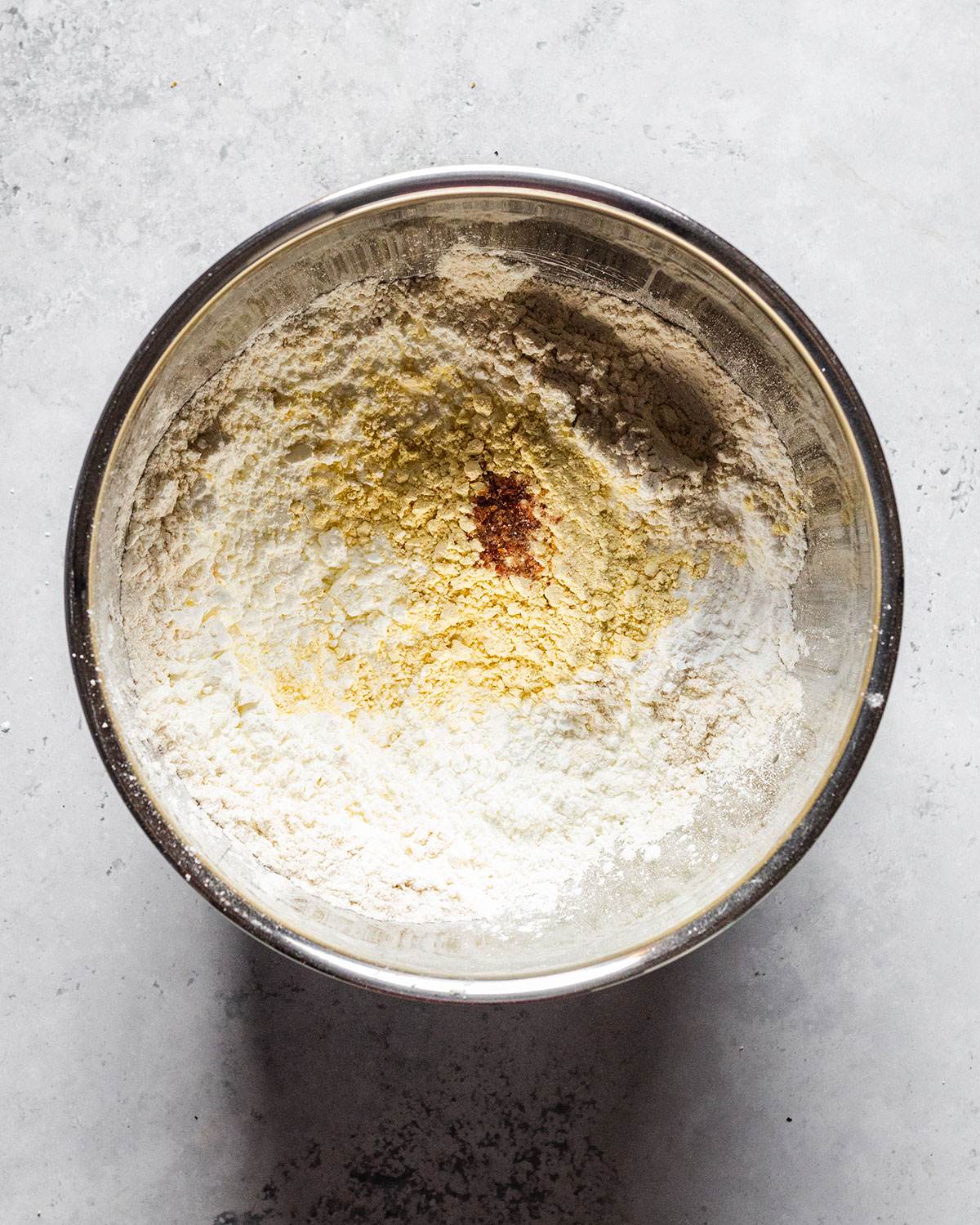
Step 3: Combine wet ingredients
In a separate jug mix together the plant milk and apple cider vinegar and set it aside for 10 minutes to curdle. This mix is a vegan type of 'buttermilk' and the acidic vinegar will, later on, react with the baking powder and baking soda in our dry mix.
It's important to only combine the wet mix with the dry ingredients right before you're ready to fill your muffin tray.
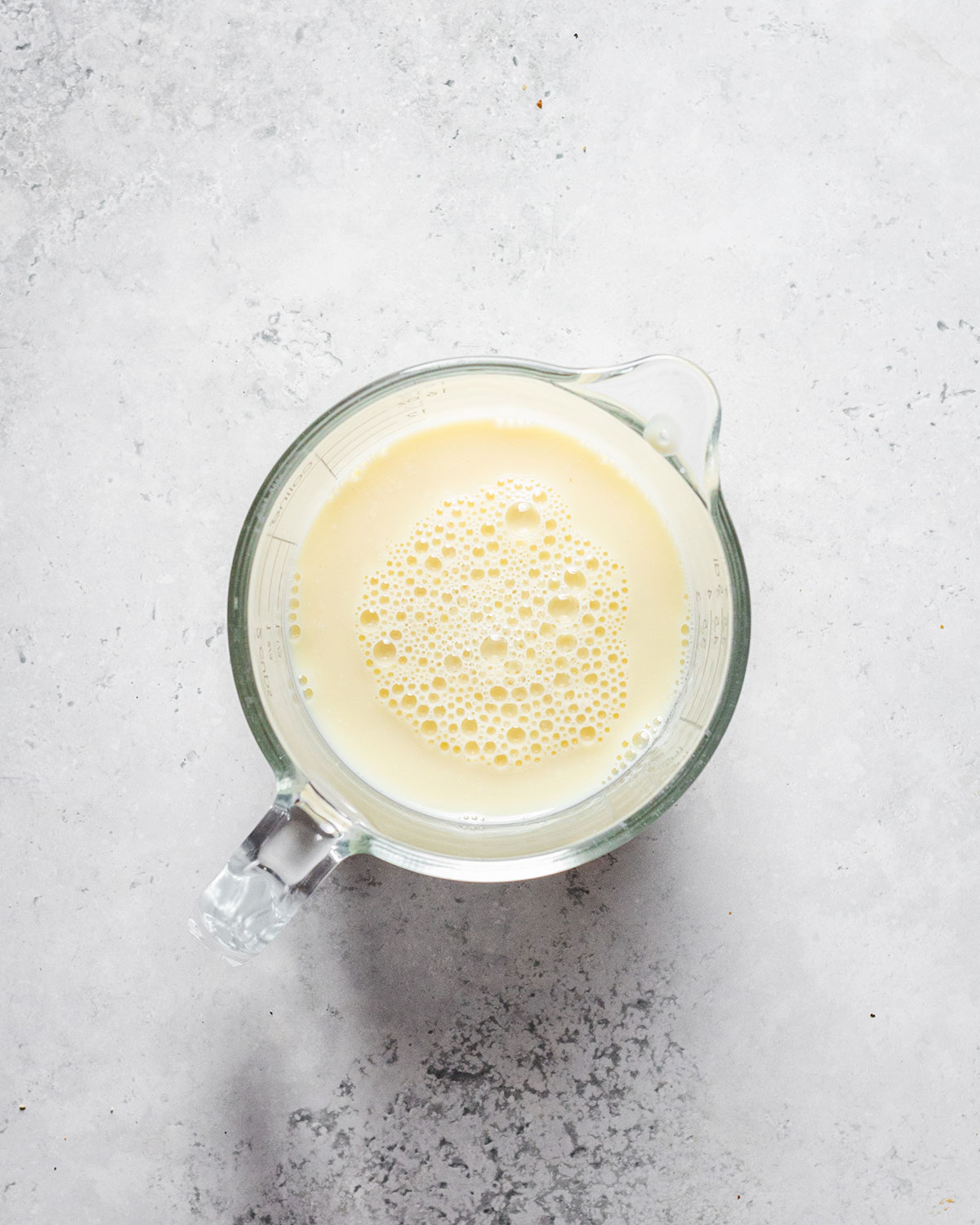
Step 4: Filling the batter
When the oil in the muffin tray is steaming hot, carefully pour the plant milk mix into the dry ingredients and quickly whisk to combine into a smooth batter.
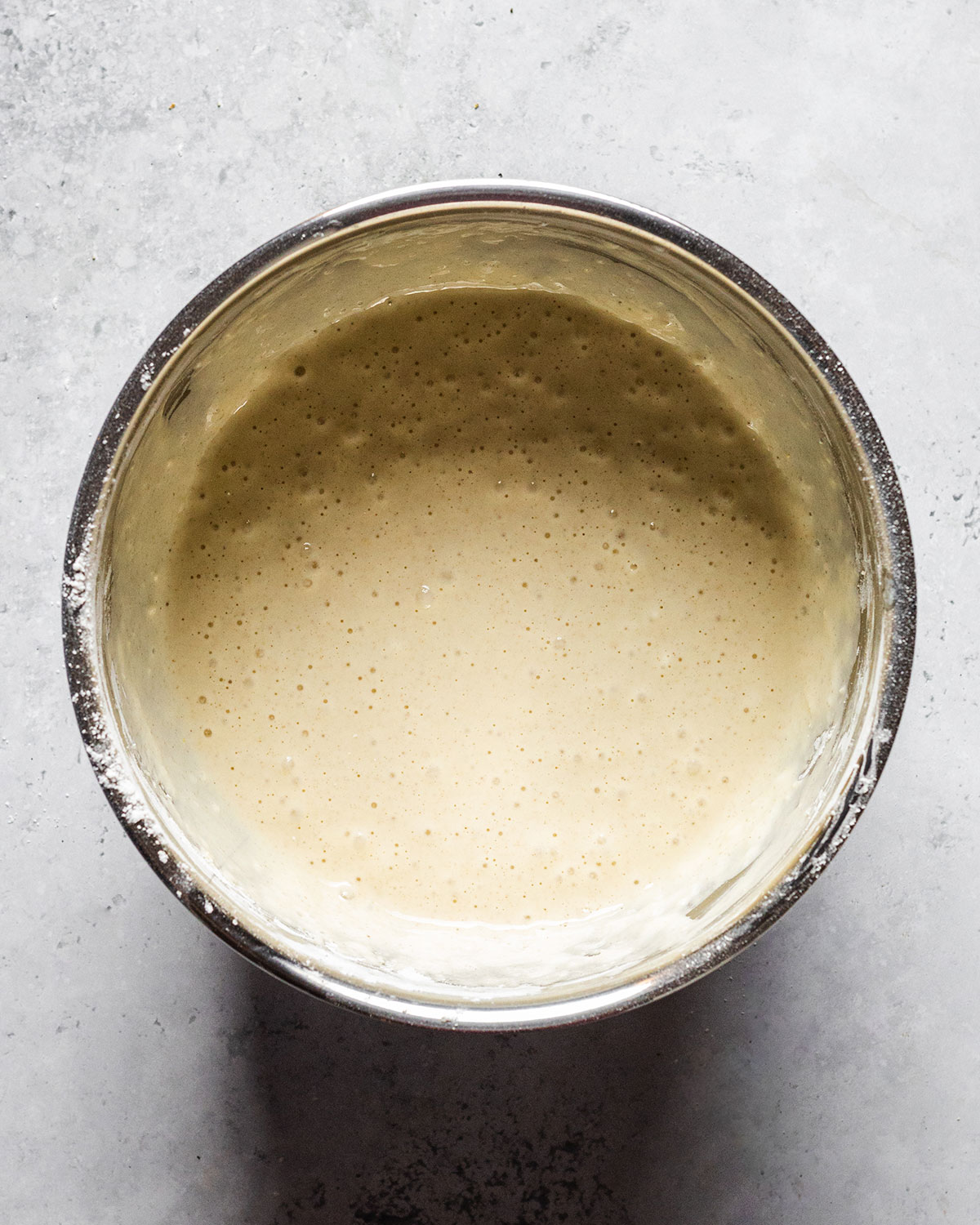
Carefully remove the hot muffin tin from the oven and quickly pour the batter into the hot oil, about ¾ all the way up.
What I usually find easiest with my oven, is to open the oven door, move the tray forward by a few centimeters and fill the Yorkshire pudding batter into the hot oil with a soup ladle. It's best to wear oven gloves to make sure you don't burn yourself!
Decide what works best for you, the key to making the perfect vegan Yorkshire pudding is to work quickly here as the batter-filled tray needs to be back in the hot oven with the door closed as soon as possible - otherwise the oil might cool down too quickly and your Yorkshire puds become soggy instead of crispy.
Step 5: Roasting
Roast your vegan Yorkshire pudding at 450°F (232°C) for 10-13 minutes until risen and golden.
Carefully remove the muffin tray from the hot oven and place it onto a heatproof surface. Remove the vegan Yorkshire pudding from each muffin hole and set them onto a kitchen towel to remove any excess oil.

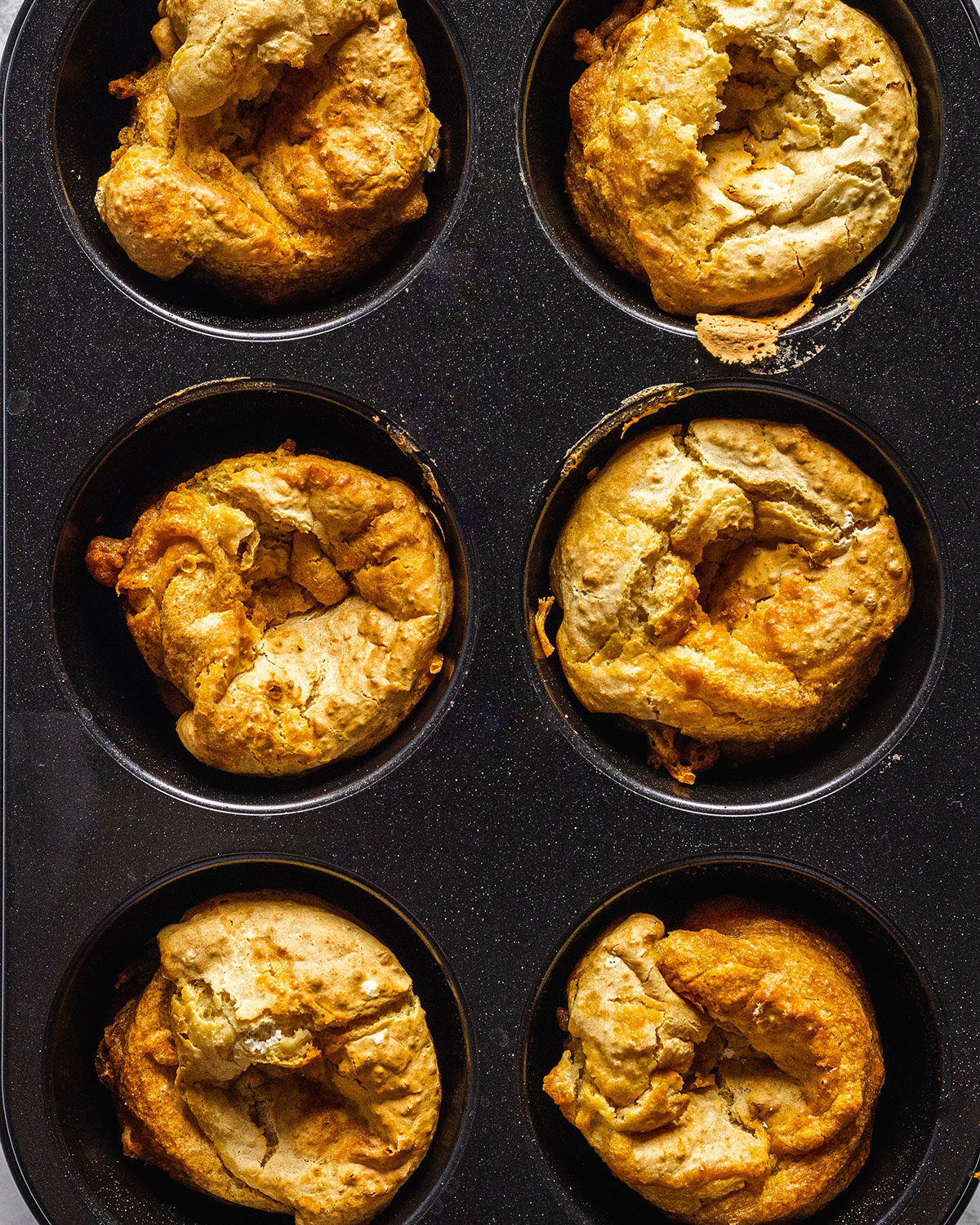
Step 6: Serving
Vegan Yorkshire pudding is best served immediately and simply delicious alongside roast potatoes and covered in vegan gravy (simply the best!).
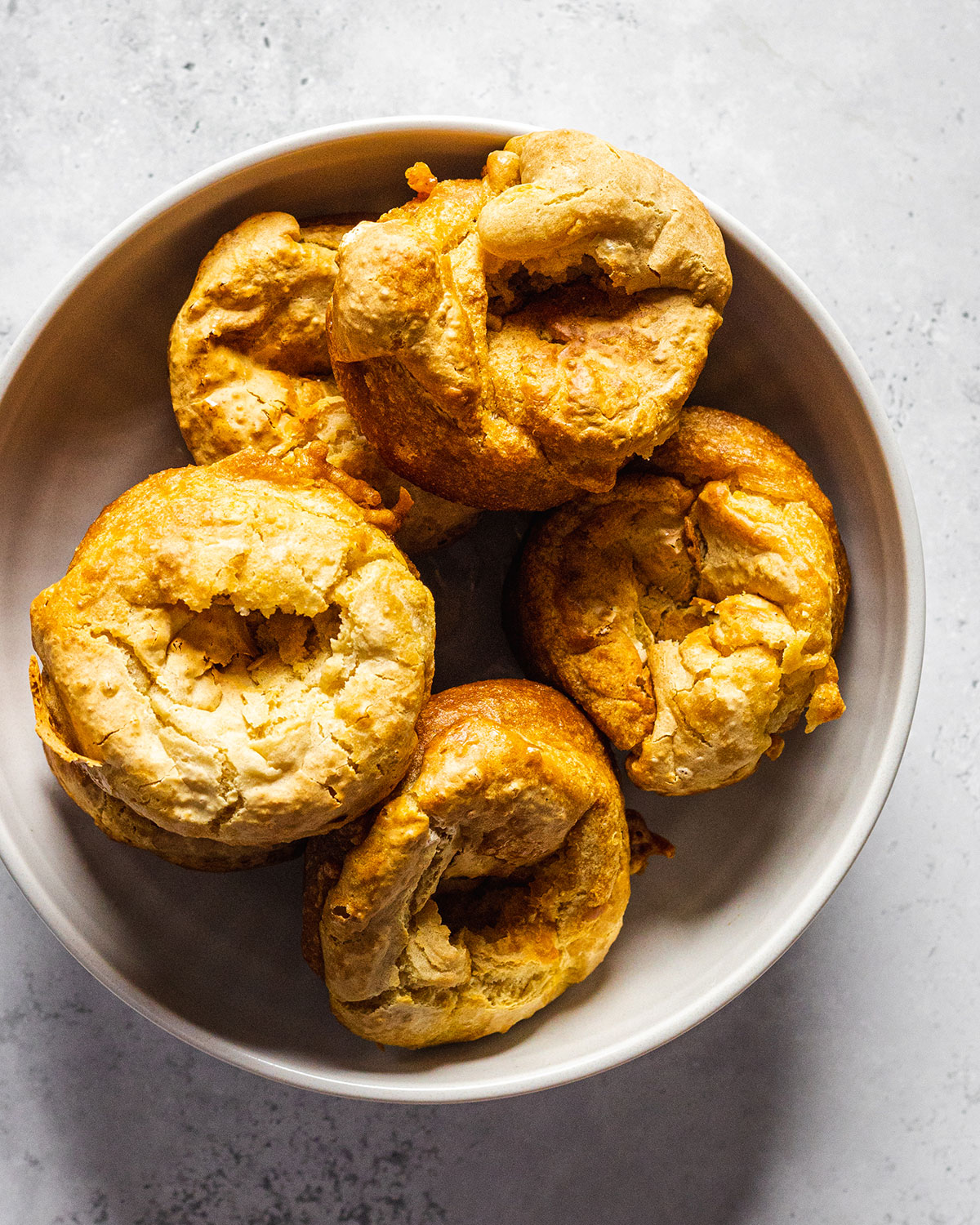
How to serve Yorkshire Puddings
Yorkshire pudding is best served alongside roast potatoes, a roast main (e.g. a nut roast or a Wellington), and your favourite gravy.
If you're looking for some delicious options to serve with your vegan Yorkshire pudding, try my homemade Apple Nut Roast or Lentil Wellington!
More Vegan Roast Dinner Recipes
If you love roast dinners, then you might want to grab a copy of my first cookbook 'The Ultimate Guide to Vegan Roasts'!
The book is in English and available worldwide with 60 recipes all around vegan roasts, from vegetable-loaded mains to more meaty ones, alongside delicious side dishes (such as Yorkshire puds!) and my favourite vegan gravies.
Find all the international order options here:
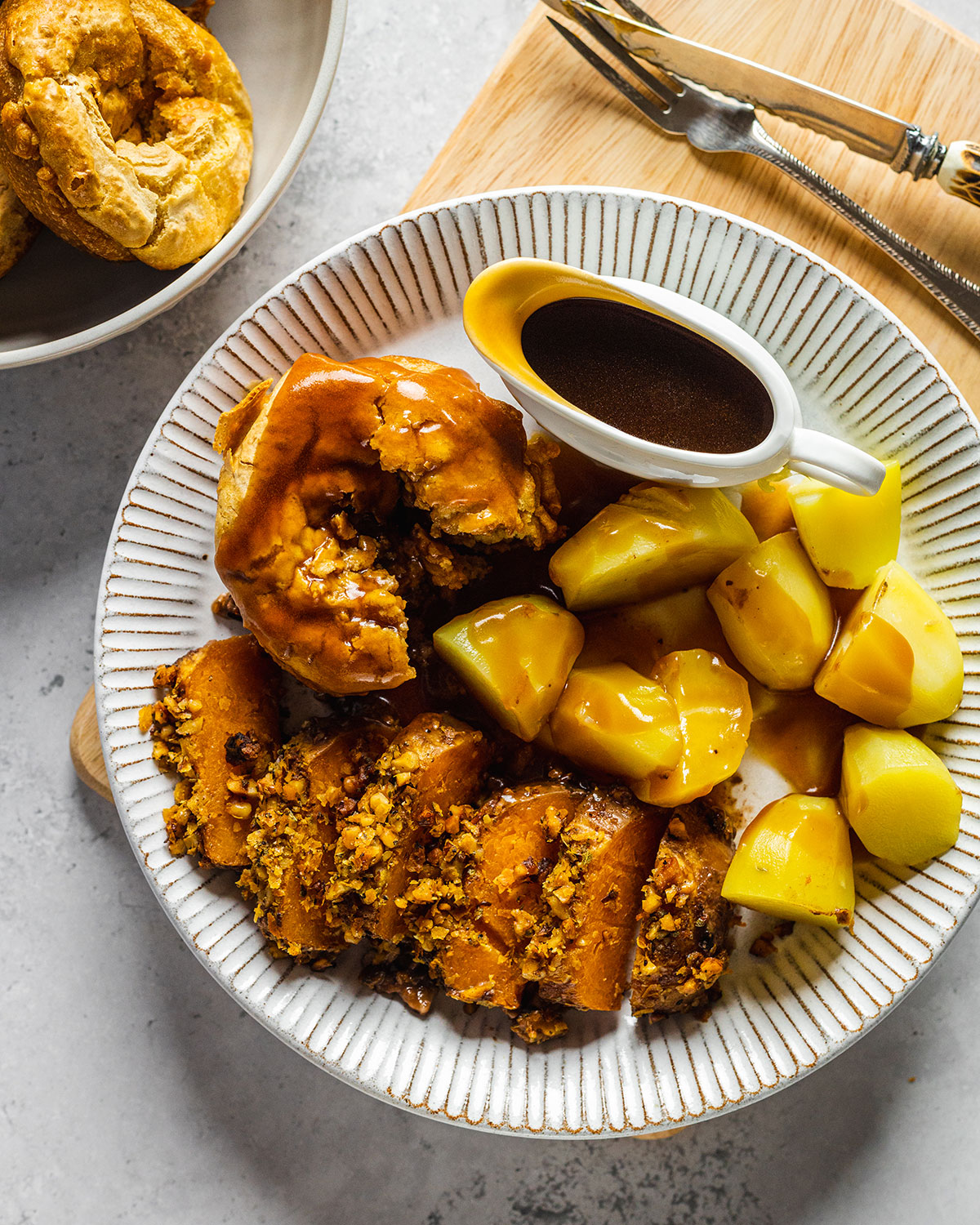
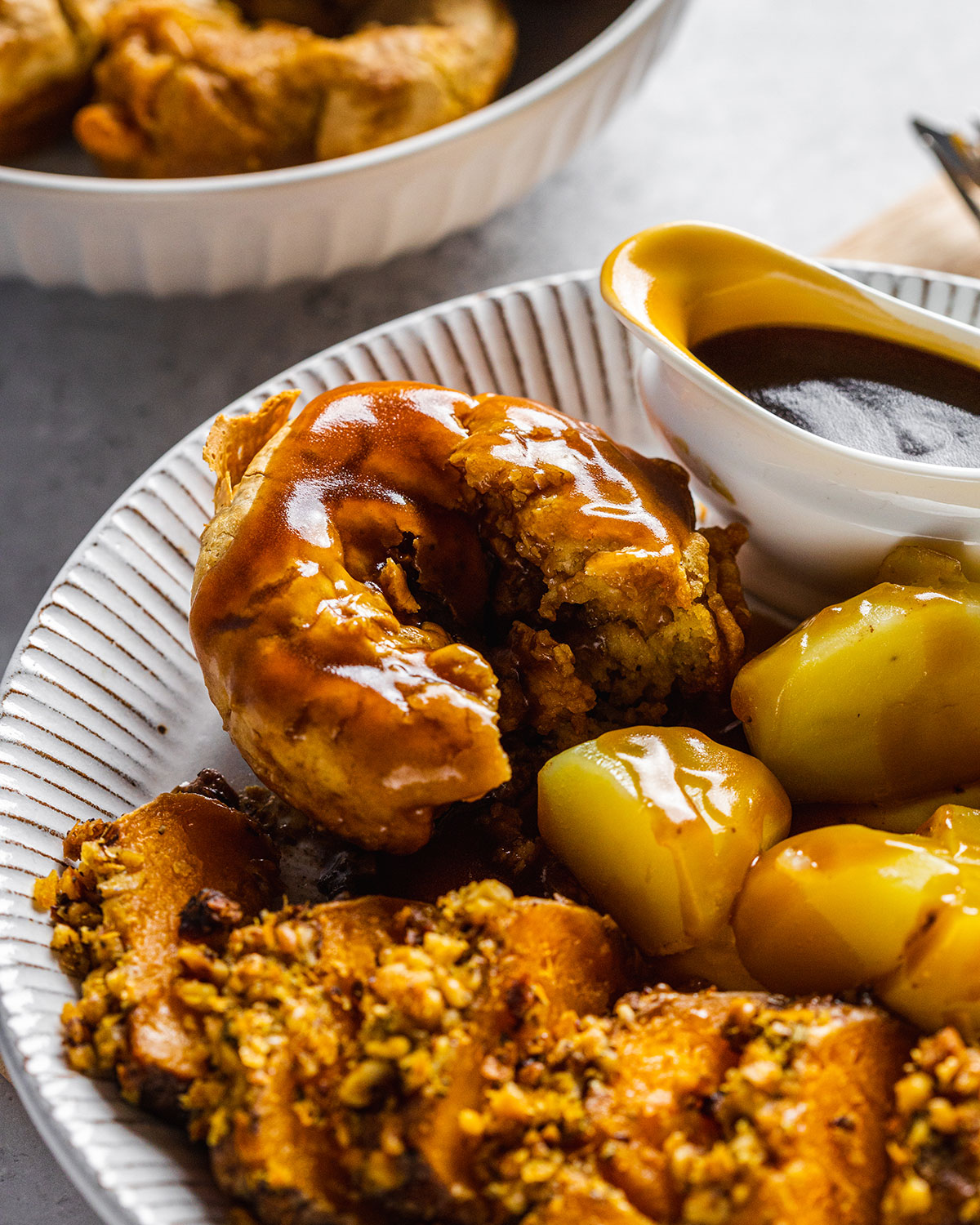
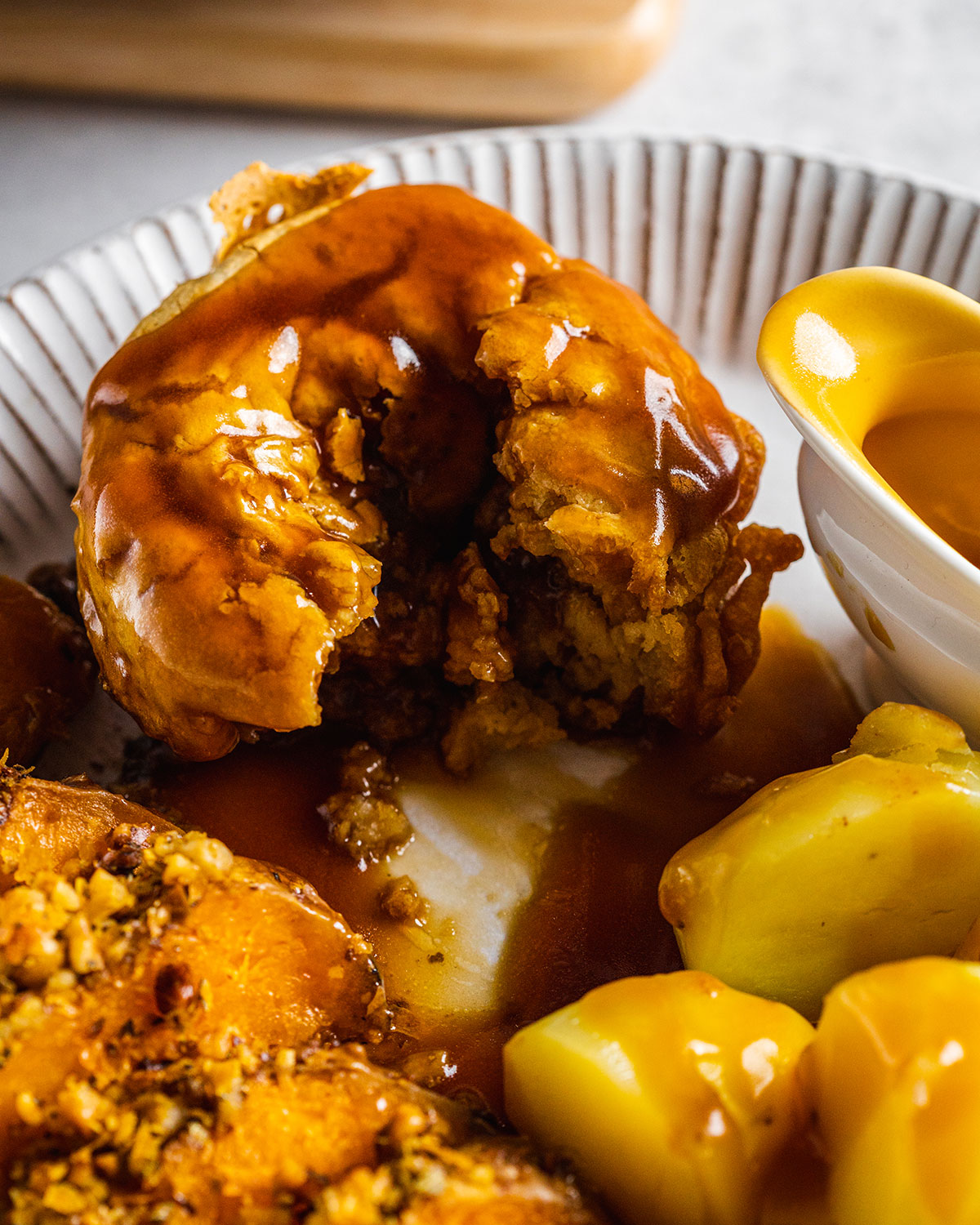
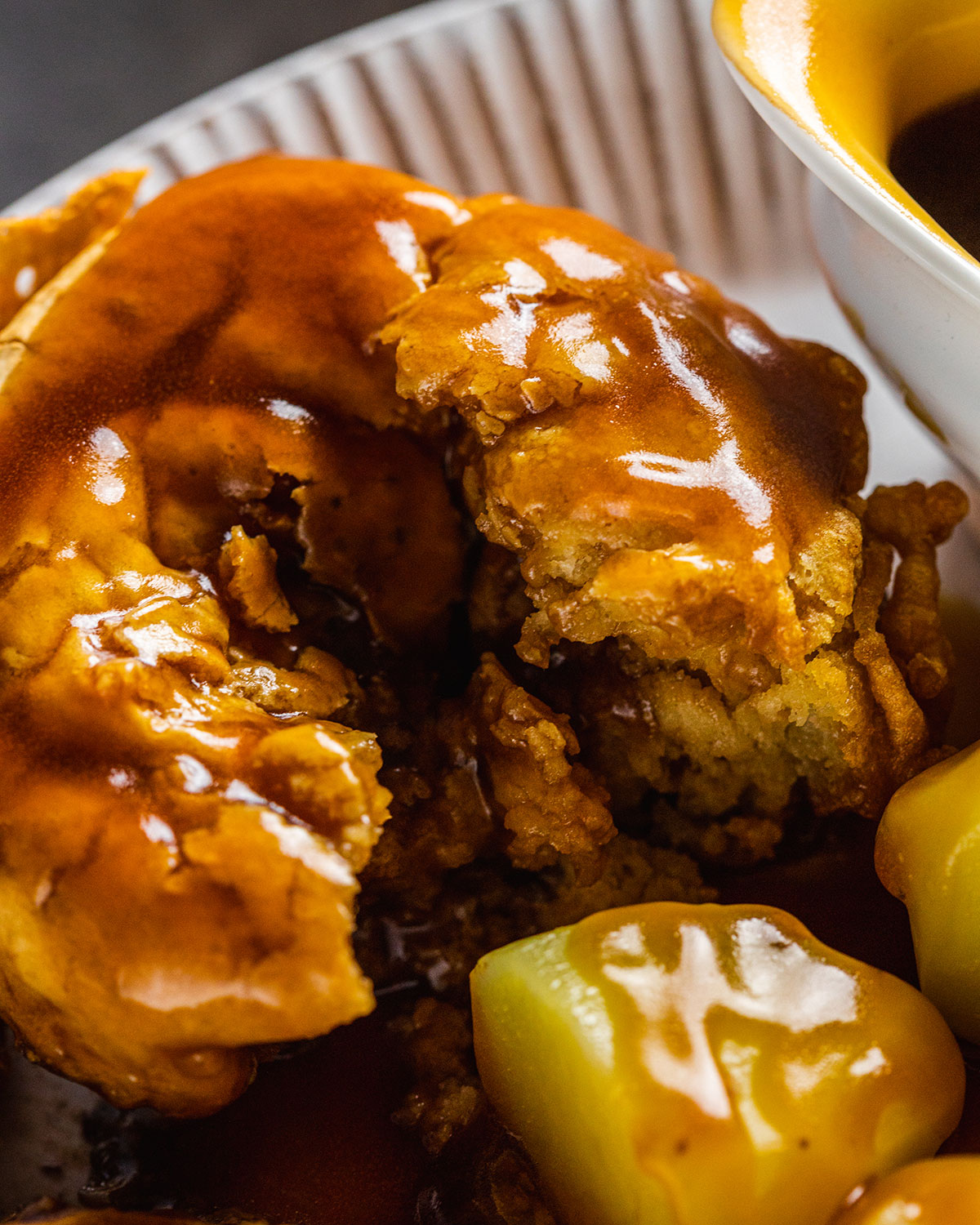
Frequently Asked Questions
No sadly, they're not. The main ingredient used in traditional Yorkshire puddings is eggs.
I have tried a classic British Yorkshire pudding tray before but have found that with a vegan Yorkshire pudding batter, they don't work very well. It's important to note that these vegan Yorkshire puds are chemically very different from traditional Yorkshire puds (that are made with mostly egg) and they, therefore, react slightly differently in heat and have other requirements to make them work. Big muffin tray it is, I would say!
I don't see why not. However, I need to add that I have not tried this recipe with a gluten-free free flour alternative myself. If you are up for the experiment, ensure to use a gluten-free flour mix intended for baking. Do not use any single ingredient-based flowers, e.g. rice flour or nut-based flour.
In general, this is a great option if you are making these vegan Yorkshire puddings ahead of time. However, for best results, I recommend making these fresh and enjoying them on the day.
Related Recipes
If you've tried and loved this recipe, I would love for you to leave a star rating and short review at the bottom of this recipe post ❤️
📖 Recipe Card
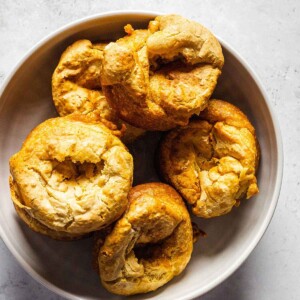
Vegan Yorkshire Pudding
Equipment
- 1 large bowl
- 1 whisk
- 1 oven
- 1 large 6-hole muffin tray
- 1 measuring jug
Ingredients
- 6 tablespoon vegetable oil (84 ml) please see notes regarding the oil
- ¾ cup all purpose flour (100 g) plain flour
- 1 cup cornstarch (130 g)
- 1 pinch black salt / kala namak optional, but highly recommended
- 2 tablespoon chickpea flour (28 g)
- 1 teaspoon baking powder
- 1 teaspoon baking soda
- 1 ¼ cups plant milk (300 ml)
- 1 tablespoon apple cider vinegar (15 ml)
Instructions
- Pour 1 tablespoon of vegetable oil into each muffin hole of a large 6-hole muffin tin. Place it in the oven at 450°F (232°C) and heat the oil for roughly 20 minutes until steaming hot.
- In a mixing bowl, sift and whisk the plain flour, cornstarch, kala namak, chickpea (gram) flour, baking powder, and baking soda. In a separate jug mix together the plant milk and apple cider vinegar and set it aside for 10 minutes to curdle.
- When the oil in the muffin tray is steaming hot, pour the plant milk mix into the dry ingredients and quickly whisk to combine. Carefully remove the hot muffin tin from the oven and quickly pour the batter into the hot oil, about ¾ all the way up.
- Quickly, but carefully move the muffin tray back into the oven and roast your vegan Yorkshire pudding at 450°F (232°C) for 10-13 minutes until risen and golden.
- Remove from the muffin tin and carefully move the Yorkies onto a kitchen towel to remove any excess oil, then serve immediately alongside your roast potatoes & cover in gravy (simply the best!).
Video
Notes
- To make this vegan Yorkshire puddings, it is important that the oil is hot by the time you add the butter to the oil. I have reached the best results by not removing the hot muffin tray from the oven but instead opening the oven door and pouring the batter in with a soup ladle. Be really careful if you want to try this and be aware that it might be a bit messy in the beginning. If the oil is not properly hot, then your Yorkshire puddings might not rise as nicely and instead become soggy as they are soaking up the oil instead of frying in the oil as soon as it touches it.
- I am certain that these vegan Yorkshire puddings can also be made gluten-free however I have not tried this myself. If you are up for the experiment, I recommend using a gluten-free flour mix intended for baking. Do not attempt this recipe with a single ingredient flour replacement, e.g. rice flour or nut-based flours.
- When combining the batter for these vegan Yorkshire puddings, make sure you whisk in the wet ingredients right before you are intending to pour the Yorkshire pudding batter into the hot oil. The longer the batter rests, the longer the ingredients will react with each other and your Yorkshire pudding would become less airy and less fluffy if you leave the batter to sit for too long.
- Make sure to use a vegetable oil with a high smoke point, so it doesn't burn in your oven.
Recent Recipes
If - like me - you love Pinterest, you can find me here & if you like, you can pin any of the images on this page to your boards 😊
© Romy London / Romina Callwitz | All images and content are copyright protected. Please do not use my images and content without prior permission. If you wish to re-publish this recipe, please get in touch via email. Thank you so much for supporting romylondonuk.com!
*Disclosure: This page may contain affiliate links that earn me a small commission, at no additional cost to you. You can find more information in my Privacy Policy.


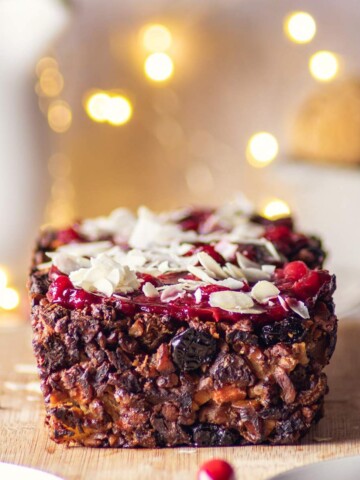
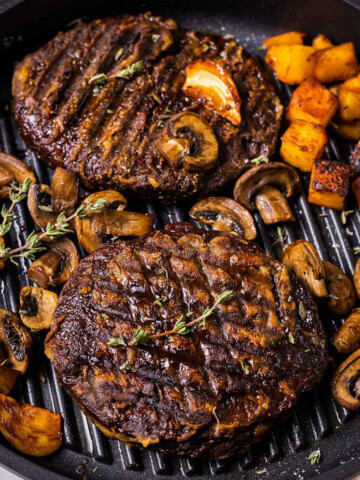
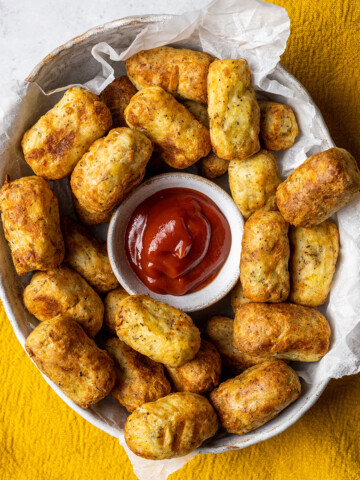
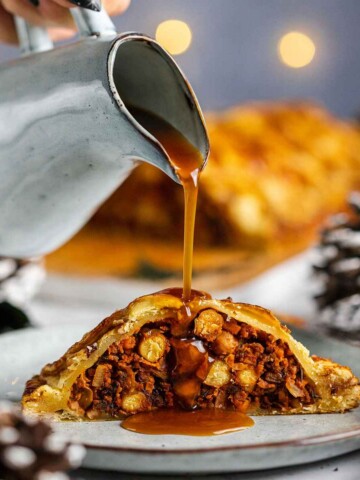
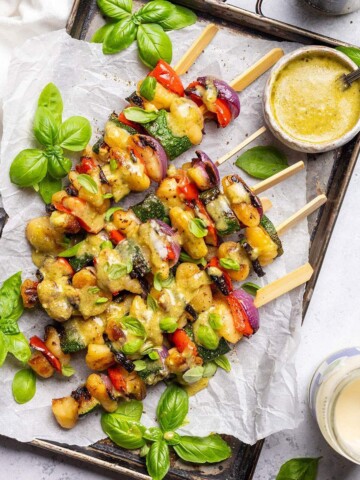
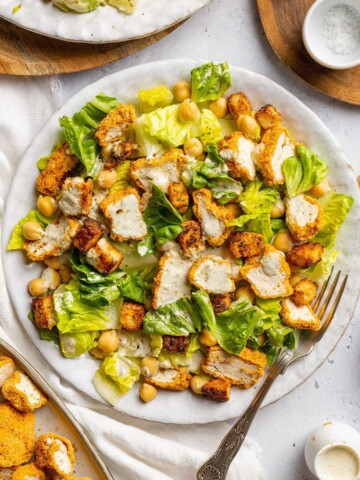

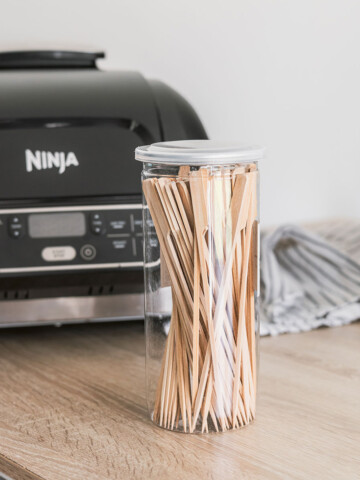
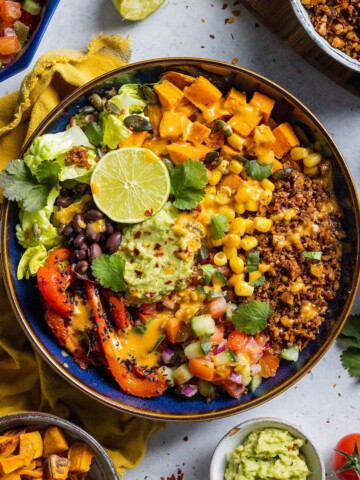
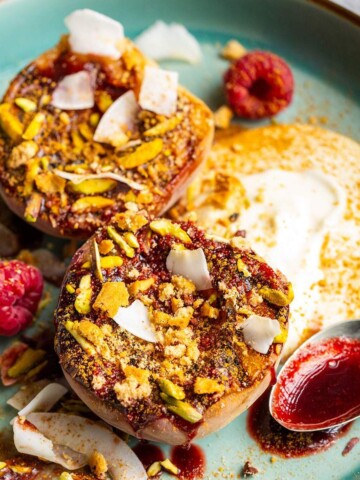
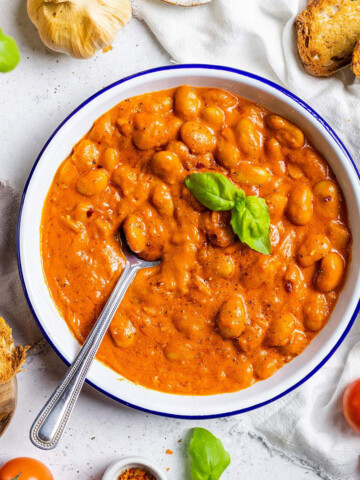
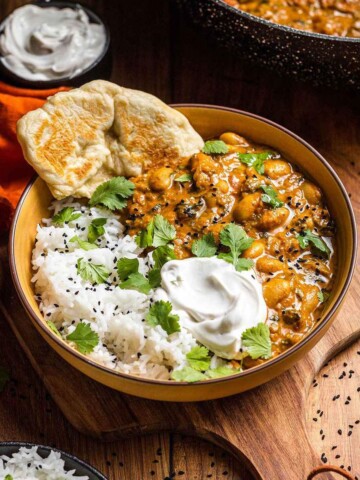
Bethany
Just made these today and they're hands down the best ones I've tried yet! Thanks for the recipe
Brit
Heck yes, love these!
Michele Talbott
Hi Romy, will these work in smaller 12 hole muffin tins?
romylondonuk
Hi Michele! Sure, this works in smaller muffin holes as well - they might just come out a bit denser and it's more difficult to get the indentation in the middle as they're overall smaller, but just as delicious!
Elliot
This is a great recipe, I've used this recipe twice at this point and it hasn't failed me, it comes out delicious, crispy on the outside, soft and spongy on the inside.
Romy
Yay, that sounds like a full on success! Thanks for leaving this lovely review 🙂